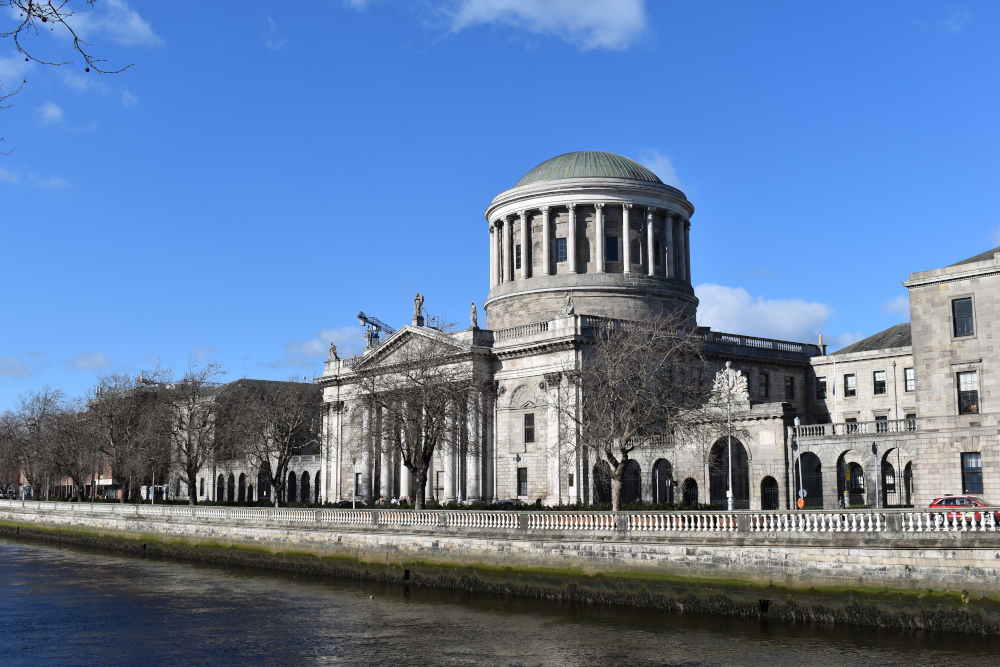High Court: Tree surgeon who installed security cameras without landowner’s permission loses appeal

The High Court has dismissed the appeal of a tree surgeon against orders for possession and injunctive relief in relation to his occupation of lands at Tiknock, Co Dublin.

About this case:
- Citation:[2025] IEHC 509
- Judgment:
- Court:High Court
- Judge:Mr Justice Conleth Bradley
Delivering judgment for the High Court, Mr Justice Conleth Bradley accepted Ms Julie McGinn’s evidence that the sending by the defendant of messages and screenshots of recordings taken from the security cameras of Ms McGinn, which showed her walking and working on her father’s lands, “was such as to amount to unacceptable harassment and intimidation”.
Background
The first plaintiff, the owner of lands at Tiknock, Co Dublin, and the second plaintiff, his daughter, issued proceedings against the defendant tree surgeon seeking reliefs including orders directing him to vacate two fields situate within their lands and to remove inter alia all livestock, structures and equipment brought onto the lands by him, and an order for possession of the lands.
The plaintiffs had licensed the use of the two fields to a John Kelly from 1980, whose son, Mark Kelly, later took over the lands under an agistment agreement which allowed him to graze animals and which was renewed every 11 months. When Mr Kelly’s horse died in 2020, it was agreed that the defendant would replace him and would take over the remaining months of the agreement.
In 2021, and following the end of Mr Kelly’s agreement with the plaintiffs, the parties entered into a further agreement in which it was agreed that the defendant’s horses could graze the fields, in consideration for the defendant’s supply of wood, coal and miscellaneous maintenance work.
The relationship between the parties deteriorated in January 2023, when the defendant, without the consent of the plaintiffs, installed security cameras at various locations on the subject fields and began to send text messages and screenshots of the second plaintiff to her, taken from the security cameras.
The defendant also constructed three sheds on the lands without the consent of the plaintiffs, and kept sheep on the lands which he refused to remove, having been requested to do so.
By letter dated 23 May 2023, the plaintiffs served a notice of termination of the agreement on the defendant, with the defendant refusing to comply with same. Consequently, on 13 October 2023, the plaintiffs served ejectment proceedings on the defendant.
The Circuit Court
Having heard the parties, the Circuit Court granted the reliefs sought by the plaintiffs, including orders restraining the defendant from trespassing on the fields and directing the payment by the defendant of €7,500 in general damages and €2,000 in exemplary damages, to be offset by the sum of €850 in respect of fencing and other minor works carried out by the defendant.
The defendant appealed to the High Court, appearing as a litigant in person.
The High Court
Mr Justice Bradley considered the parties’ evidence, accepting inter alia that the second plaintiff was unacceptably harassed and intimidated by the defendant’s behaviour which came within the principle referred to in Sullivan v Boylan & Ors (No. 2) [2013] IEHC 104, [2013] 1 I.R. 510, which held that damages arose for breach of the plaintiff’s right to integrity and to enjoy his personal dwelling without interference.
In particular, the judge highlighted messages and screenshots sent by the defendant to the second plaintiff which included statements such as “Are they new tracksuit bottoms” and “What were you doing at the back of my horse box yesterday there [sic.] wire gone missing [sic.] it was there Saturday”.
Being satisfied that the plaintiffs were entitled to serve the notice of termination on the defendant, the court considered the defence and counterclaim which inter alia contended that by reason of representations and assurances made by the plaintiffs, they were estopped from denying the defendant’s equitable interest at the two fields and in the alternative, that the defendant was entitled to a declaration that he had a proprietary interest in the property or to compensation for his alleged detriment suffered in reliance on the plaintiffs’ representations.
Having regard to the evidence, the court found no basis for the defendant’s counterclaim or plea of estoppel, and did not accept the submissions made by the defendant that he had placed cameras in such a position as to provide security for the plaintiffs on their own lands.
In that regard, the court noted that the cameras had been placed on the lands without the plaintiffs’ permission or consent and had been camouflaged, and did not accept “that the motivation for doing so was in some way altruistic”.
The court was further satisfied that the sheds constructed on the lands were a visual eye-sore and were of little value save for firewood and scrap, and that the 40 days’ notice given to the defendant in respect of the termination of the agistment agreement was reasonable.
Conclusion
Accordingly, the High Court granted an order for possession of the fields, orders directing the defendant to vacate the fields and directing the defendant to remove inter alia his livestock, vehicles, sheds and equipment therefrom within a period of two months, an order restraining the defendant from trespassing on the fields, and awarding €8,000 in general damages and €2,000 in exemplary damages to the plaintiffs, to be offset by the sum of €1,000 in respect of works done by the defendant.
John McGinn and Julie McGinn v Sean Davis [2025] IEHC 509





